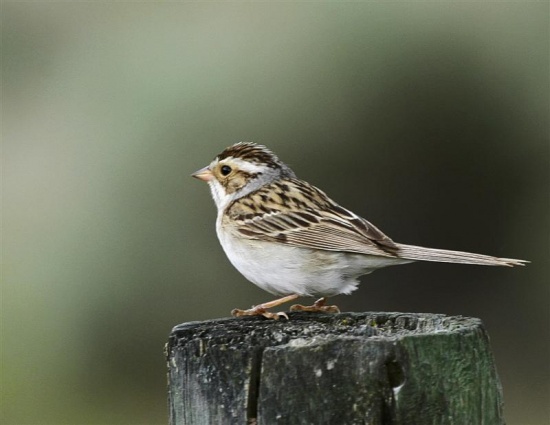- Spizella pallida
Identification
Adults have light brown upperparts and pale underparts, with darker streaks on the back. They have a pale crown stripe on a dark brown crown, a white line over the eyes, a dark line through the eyes, a light brown cheek patch and brown wings with wing bars. The short bill is pale with a dark tip and the back of the neck is grey; they have a long tail. Non-breeding adults and immatures resemble Chipping Sparrows and Brewer's Sparrows; they often form flocks with these birds outside of the nesting season. The song is two to four insect-like buzzes on a single pitch. The call is a high tsip.
Distribution
Clay-colored Sparrows are complete migrants, meaning there is no overlap between summer and winter ranges. They typically migrate in flocks through the Great Plains to southern Texas and Mexico. Wanderers are found in the fall from the Atlantic to the Pacific Coasts. In these cases, the wandering Clay-colored Sparrows are usually found with Chipping or Brewer's Sparrows.
Taxonomy
Phylum: Chordata
Class: Aves
Order: Passeriformes
Family: Emberizidae
Habitat
Their breeding habitat is shrubby open areas and Jack Pine woods across central Canada and central northern United States east to the Great Lakes. The nest is an open cup on the ground or low in a shrub
Behaviour
They forage on the ground, mainly eating seeds and insects. Outside of the nesting season, they often feed in small flocks. While nesting, these birds may feed far from the nest; feeding areas are not defended.




